Guest blogger: Anastasia Dukova - Q ANZAC 100 Fellow
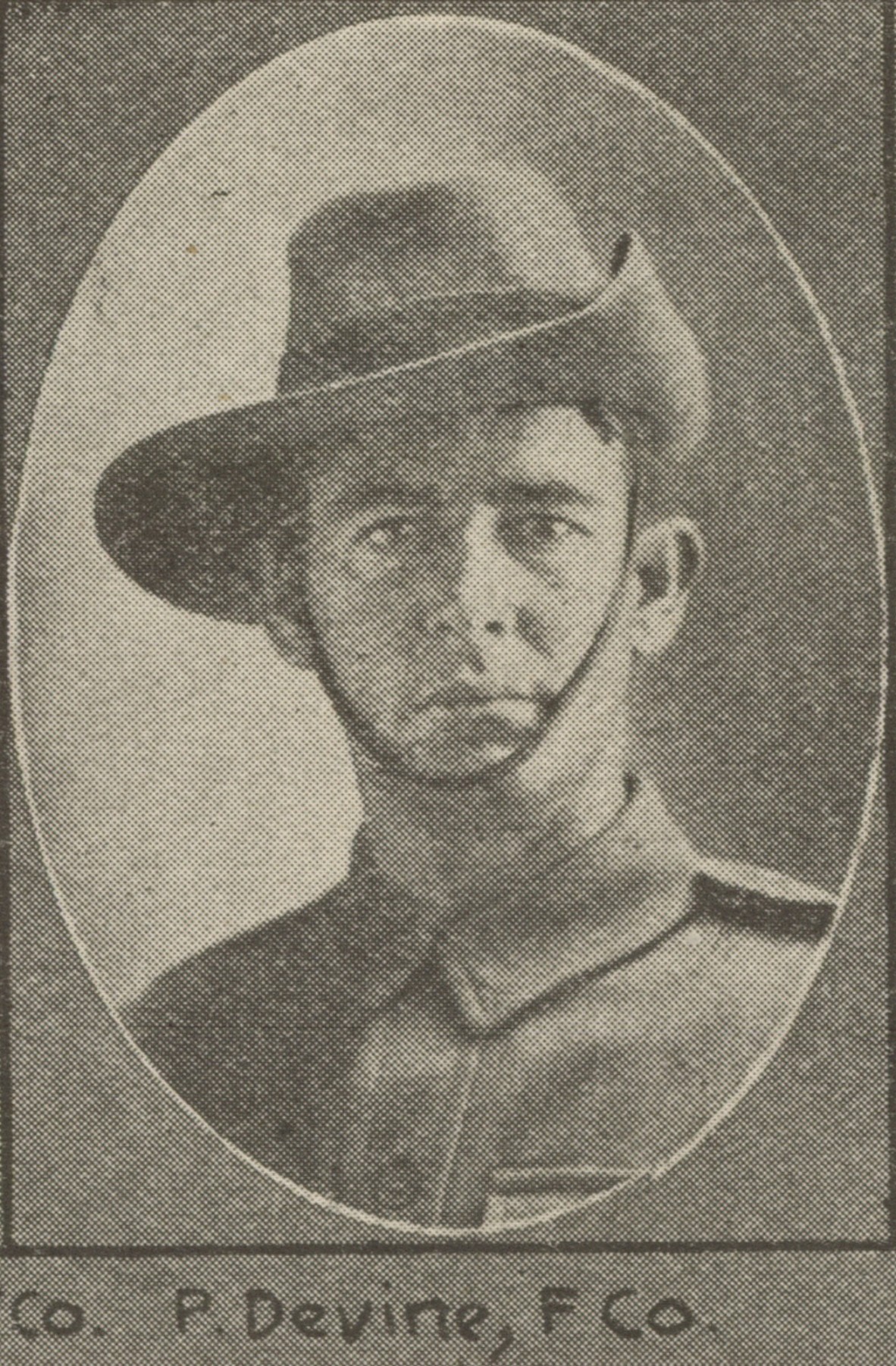
P. Devine, F Co., one of the soldiers photographed in The Queenslander Pictorial supplement to The Queenslander 1914. John Oxley Library, State Library of Queensland. Image 702692-19141024-s0024-0004
Patrick Devine was born into a large Roman Catholic family on 17 March 1886 in Skeaghvasteen, Kilkenny, Ireland. According to the Census of Ireland 1901, he lived with his parents, Patrick (55) and Elizabeth, or Eliza, (50), his grandmother Mary, who was 82 at the time, seven siblings (out of nine) and a young niece, Eliza Lowe (5). Patrick came from a fairly well-educated family. His father was a ‘Sub Postmaster’ and his mother, originally from Dublin City, worked as the District Midwife. Patrick, 14 years old at the time of the Census, also worked at the Post Office, as a rural postman.
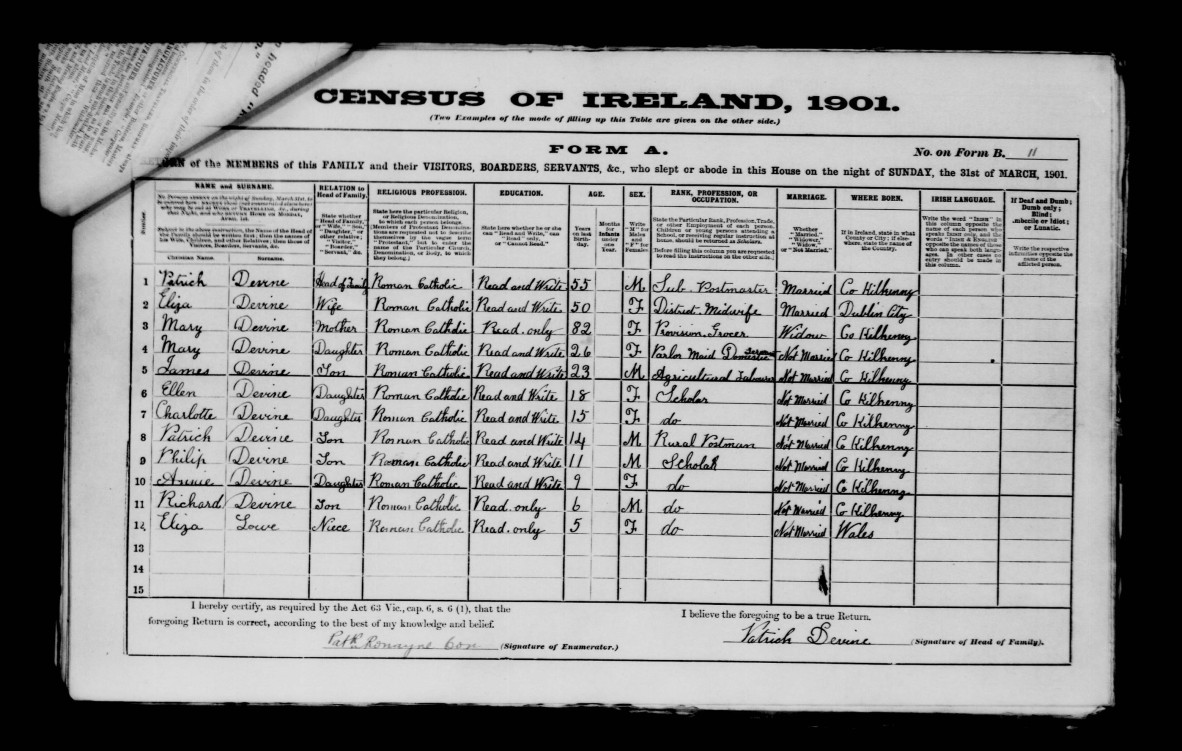
Census of Ireland, 1901. Form A.
In 1911, Patrick Devine senior still held the position of Sub Postmaster, his wife, Eliza, assisted him as the Postmistress. (Census of Ireland 1911) Only five children now remained at the family home. In 1908, on 10 August, Patrick Devine left Skeaghvasteen and joined the Royal Irish Constabulary (RIC). There is one record of him serving in Brawney, Athlone, county Westmeath. On 27 October 1913, he resigned from the RIC to emigrate to Australia.
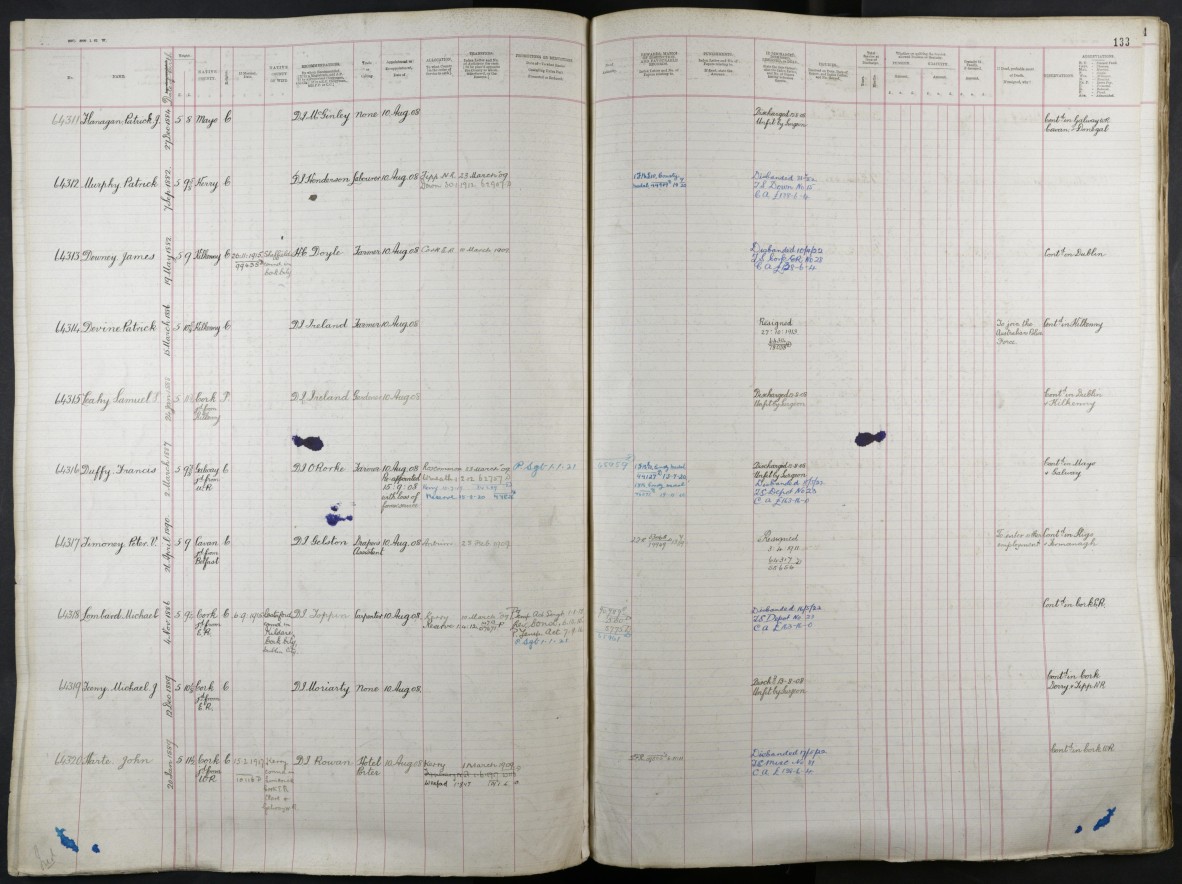
The Royal Irish Constabulary Register, RIC, HO1084, National Archives UK
Only four months after leaving the Irish Constabulary, Patrick Joseph Devine, Reg No 1805, applied to join the Queensland Police Force (QPF). He was sworn in on 11 February 1914. Since its inception in 1863, and until 1930, Ireland was a key source of recruits for the Queensland Police. The peak came in the 1880s, where 61% of recruits listed Ireland as their country of birth. By the 1910s, the number had fallen to just under a quarter (Dukova, A History of the Dublin Metropolitan Police and Its Colonial Legacy, p. 153). Candidates with previous service with the Irish Constabulary, urban police, such as the Dublin Metropolitan Police, or any military/law enforcement agencies were actively sought out by the colonial forces. The Queensland Police Recruit Register describes Patrick as 5 feet 11 and a quarter inches tall, measuring 37 across the chest (NAA 3503373_Devine), of fresh complexion with blue eyes and dark hair.
As Patrick volunteered to enlist into the Australian Imperial Force so soon after joining the Queensland Police Force, his local police service record is brief. He spent his short career as a policeman in the Traffic Office at Roma Street Station. An electoral list published in the Brisbane Courier from February 1915 gives Constable Devine’s address as Roma Street Police station.
According to the AIF records, Patrick enlisted on 25 June 1915. He was single upon joining the Expeditionary Force. Following a competitive exam, he was appointed 2nd Lieutenant on 30 July 1915. On 21 October 1915, Lt Devine embarked on HMAT A48 Seang Bee and left Australia for Suez.
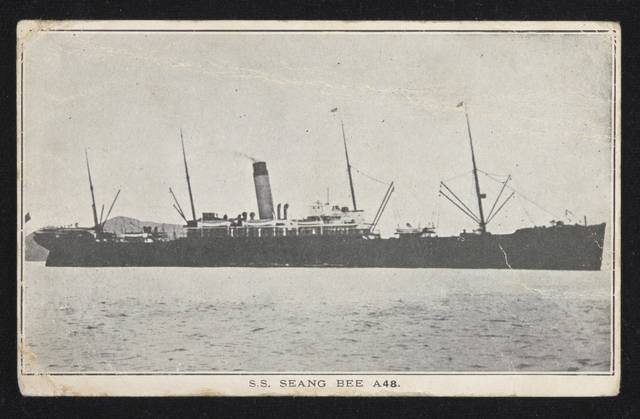
SS Seang Bee A48, National Museum Australia collection
On 24 July 1916, Lt Devine, 9th Infantry Battalion AIF, was wounded in Pozieres, France . The proceedings of a medical board indicate that Patrick was suffering from shell shock. The circumstance of the injury specify that he was ‘blown up and unconscious for half an hour. Carried on till next day, then collapsed. Headache, dreams, tremors, reflexes, plus .’ (NAA 3503373_Devine). On 8 August 1916, Devine was hospitalised at the 4th London General Hospital (RAMC). He was incapacitated for 8 weeks. On 10 October 1916, the Medical Board, Australian Military Offices, London, found that Lt Devine was still suffering from shell shock. Patrick described that he was ‘nervous, and insomniac, sleeps badly, dreams, and has no appetite. Pulse 64-74.’ (NAA 3503373, p. 11) On 19 February 1917, though still suffering from shell shock, Devine was found fit for general duty. (Ibid, p. 13)
On 20 September, the Battalion went into action at Polygon Wood. They were relieved on the 23rd and returned to the line at Anzac Ridge on 30 September. They were in action again in the Battle of Broodseinde and relieved Canadian troops who had captured the quagmire of Passchendaele Ridge. On the morning of 3 November, their position was shelled and attacks followed soon after with some of the position lost. It was regained after some fierce fighting. (Paul Ruge, Their Glory Shall not be Blotted Out, 2006)
The same day, Patrick was killed in action by ‘a bullet through the head’. He died in the field hospital in Belgium.
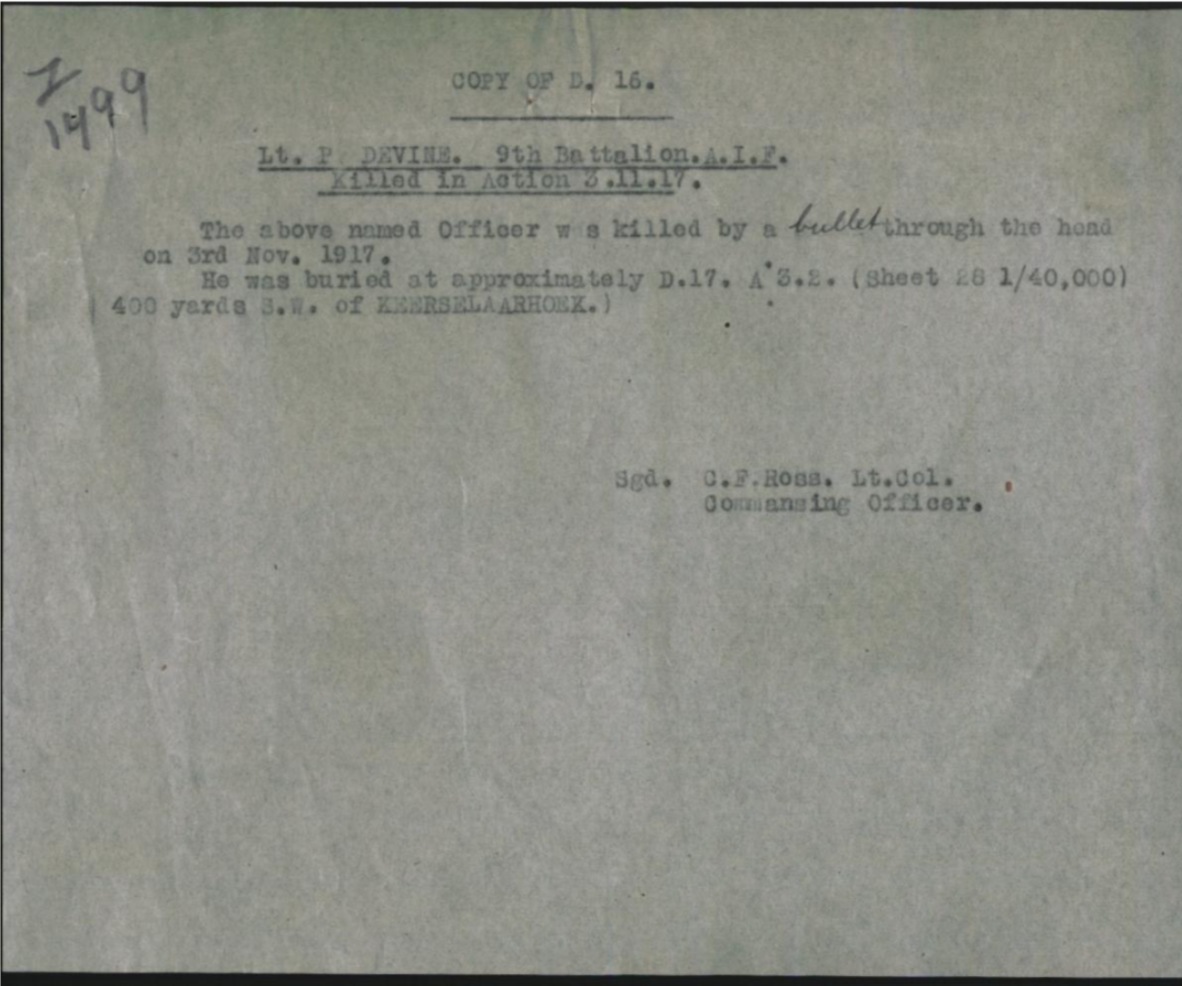
Killed in Action, National Archives of Australia, 3503373
Eva Mary Devine of 4 Brighton Buildings, Terenure Rd, Dublin, was listed as Patrick’s next of kin. Patrick and Eva Mary Bethel got married while he was on leave with shell shock, near the end of 1916 in South Dublin (Eva Mary Bethel, Patrick Joseph Devine, 1916, Oct-December registration quarter; Vol 2, p. 541, Irish Marriages 1845-1958, findmypast.com.au) Like millions of mothers and widows, Eva Mary received an envelope, shown below, notifying her of her husband’s sacrifice to the Great War.
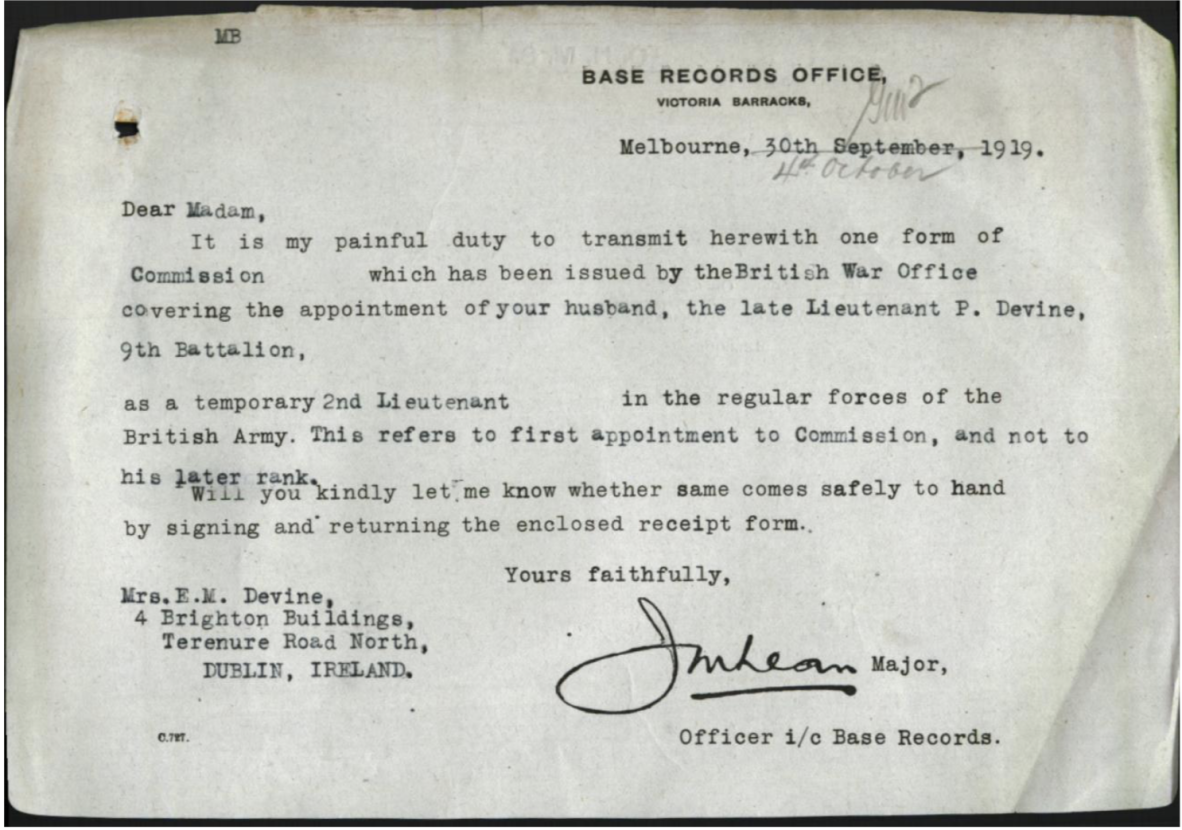
‘Dear Madam’, National Archives of Australia, 3503373
Patrick was one of 17 Irishmen who left their active duty at the QPF and joined the AIF. Seven Irish-born, 30 overall, Queensland policemen were killed in active service in the First World War.
Patrick’s grave site is unknown, however, he is listed on the memorial to the missing at Ypres (Menin) Gate.
Anastasia Dukova - Q ANZAC 100 Fellow
Comments
Your email address will not be published.
We welcome relevant, respectful comments.